Allegedly, when the first shot aimed at Hannie Schaft’s head only grazed her temple, she taunted the firing line: “Ouch! I shoot better!”
Hannie Schaft is arguably the most famous resistance fighter in modern Dutch history. During World War 2, the young woman fought against the German occupiers and was later wanted for treason, espionage, and murder.
‘The girl with the red hair’
The Nazis, who had no idea who Hannie was, described her as ‘the girl with the red hair’ on their most-wanted list.
So who was this revolutionary Dutch resistance fighter? How did she get catapulted into a life of espionage? And what do we know about this 100% verified badass? 🦹♀️
Schaft’s younger years
Hannie Schaft was born as Jannetje Johanna Schaft in Haarlem, on 16 December 1920. Her parents were Peter Schaft and Aafje Talea Vrijer.
Hannie had an older sister who tragically died from diphtheria at the age of seven. In part because of that, her parents raised Hannie with great caution and kept a close eye on her.
It is said that Hannie developed a political consciousness from a young age. Both parents were avid followers of world affairs and discussed these openly at the dinner table, also with Hannie.
Peter Schaft, in particular, was an active supporter of the socialist-democratic party SDAP and conveyed his leftist tendencies to his daughter.
The young Johanna was also an excellent student at school. But while she was open and talkative at home, in class, she remained rather quiet and withdrawn. Her bright red hair also made her the target of teasing and mockery.
This experience of social exclusion could have contributed to the strong sense of justice that would later draw Hannie into the resistance movement. It also found expression in her wish to study law at university.
Later, Hannie dreamed she could specialise in human rights and work for the League of Nations (the predecessor of the United Nations).
University: first steps into the resistance
Hannie started attending the University of Amsterdam in 1938 to pursue a law degree. Only a year later, in 1939, German troops invaded Poland under Adolf Hitler’s command, and World War II took hold of Europe.
Already in these early stages of the war, Hannie’s spirit of resistance began to show. Through the Red Cross, she started sending packages with food supplies and other necessities to imprisoned Polish soldiers.
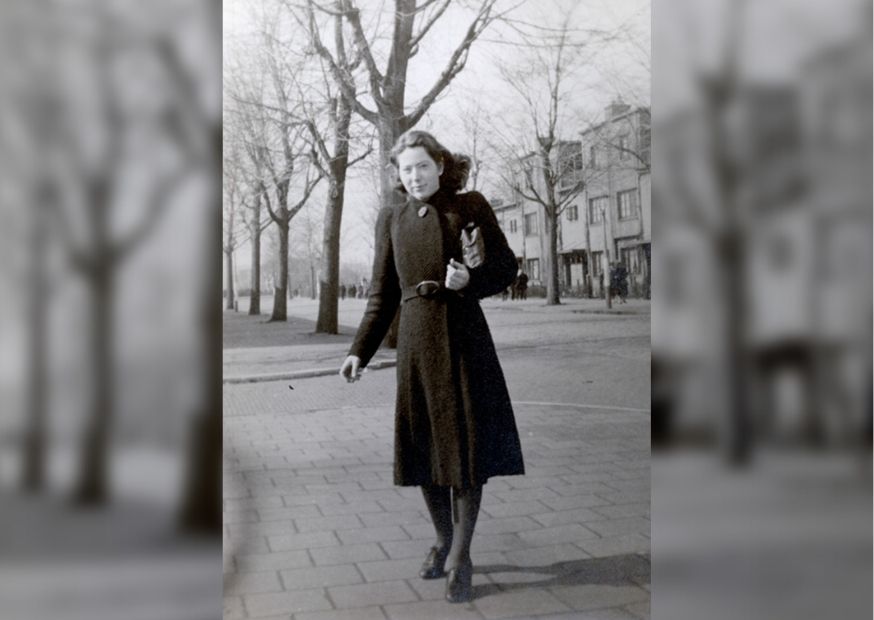
While Hannie had trouble making friends at school, she had an easier time at university. Two connections, in particular, would last Hannie until the end of her life: the sisters Truus and Freddie Oversteegen.
Hanni also founded the all-girls debate group ‘Gemma’. Critiques against the German Nazi occupation and anti-semitism were frequent topics of discussion.
By the end of their time at university, the girls were protesting on the streets more than they were studying. 💪🏻
Germany occupies the Netherlands
Despite attempts by the Netherlands to stay neutral during the war, German occupiers took control of the country on May 10, 1940.
During this time, Hannie started writing articles in the university paper criticising the segregation of Jewish students and teachers, who were later banned from campus.
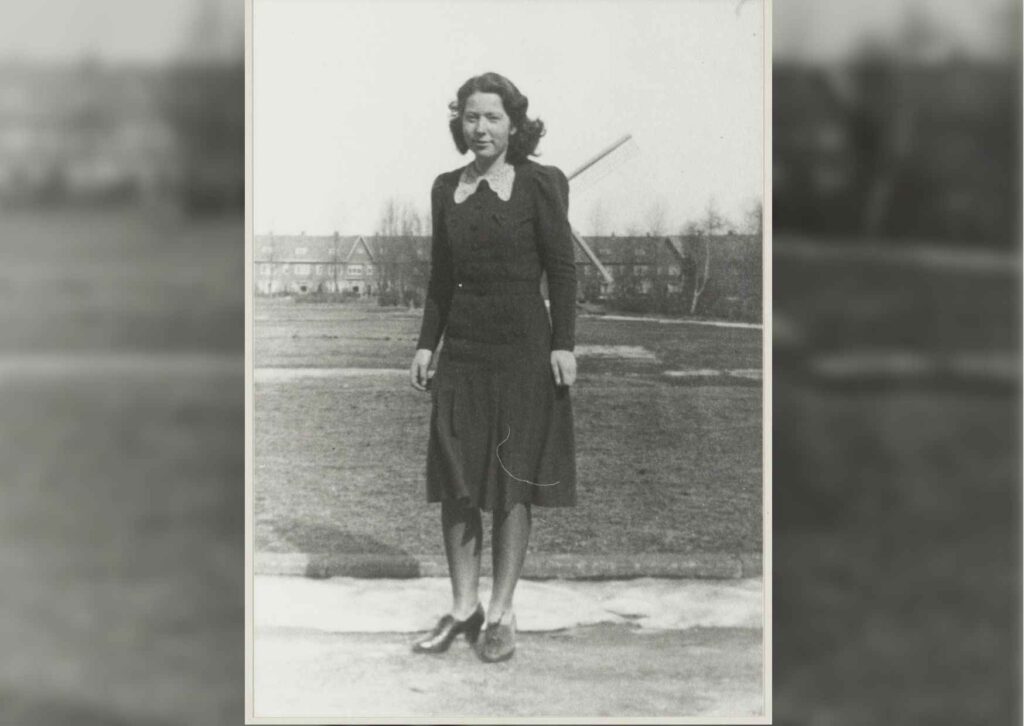
She also joined the 80% of non-Jewish students who refused to sign a declaration of loyalty to the German Reich. As a consequence, Hannie had to stop her studies early.
READ MORE | The 19 biggest differences between Germany and the Netherlands
Responding to the concerns of her parents, she left Amsterdam and moved back home to Haarlem.
Joining the Council of Resistance
The Raad van Verzet (Council of Resistance) (RvV) was founded in Haarlem in 1943.
Under the occupation, there were different, disconnected resistance groups popping up all over the Netherlands, and the RvV wanted to create a unified movement across the country.

Both the Oversteegen sisters and Hannie were determined to keep up their fight against the German occupiers, so they joined the RvV.
Hannie made a point of emphasizing that she wanted to do more than distribute flyers or steal passports. Instead, she wanted to step fully into the role of an active resistance fighter.
So, Hannie was ordered to assassinate a member of the German Security Service (Sicherheitsdienst or SD).
READ MORE | 11 kick-ass Dutch women you should know about this International Women’s Day
The girl with the red hair fronted up to the challenge and pulled the trigger while aiming at her target — unknowingly shooting a rubber bullet at a fellow RvV member instead. She passed the test and became entrusted with a larger role in the resistance movement from then on.
This was also when Jannetje Johanna Schaft took on Hannie Schaft as her permanent code name — and Hannie Schaft, the legendary Dutch resistance fighter, was born.
Beginning her career as an assassin
Under the guidance of experienced RvV members, Hannie was instructed in the use of weapons and espionage. Because she spoke excellent German, Hannie was considered to be an especially valuable asset to the movement.
Some people even confused her for a moffenmeid — a derogatory Dutch slang term used for German women. Whilst it made some Dutch people distrust her, Hannie could easily listen in on German officers and develop friendly relations with them if she had to.
Together with her friends Truus and Freddie Oversteegen, Hannie carried out attacks against high-ranking German officers, stole important documents, and was also ordered to kill.
Freddie Oversteegen was only 14 when she joined the Dutch resistance during World War II, and only a couple of years older when she became one of its armed assassins. Together with her sister—and later, a young woman named Hannie Schaft—the trio lured, ambushed and killed German… pic.twitter.com/vDDx4DZaY7
— Ozil💖 (@iconicjuddy) November 8, 2023
However, Hannie did not blindly follow orders and was aware of her moral boundaries. At one point, she declined an assignment that required the abduction of children whose parents were Nazi officials. It’s a thin line to walk, but she did it gracefully!
Schaft and Bonekamp
Hannie also worked closely with one of the founders of the RvV, Jan Bonekamp, whom she admired greatly. Bonekamp was described as charismatic, fearless, and good-looking. He was also older than Hannie and seemingly made quite an impression on her.
However, even within the resistance movement, he was known as an extremist who took especially great risks. While it is uncertain whether or not the two were romantically involved, Hannie was notably influenced by his unwavering commitment to the cause.
During that time, her parents even asked her to move out because they were scared and apprehensive of her “dark work.”
A killing that went horribly wrong
In 1944, Hannie and Bonekamp received an order from the RvV which would change everything. They were instructed to kill a Dutch police chief and collaborator in Zaandam called Willem Ragut. The plan was for Hannie to shoot first, and then for Bonekamp to follow up in case their target would not die immediately.
It was a good call because this is exactly what happened. Hannie’s first shot hit the collaborator in the back but did not kill him. Bonekamp, wanting to finalise the kill, followed up — but was shot in the stomach in return.
Willem Ragut died nevertheless, and the two resistance fighters fled in different directions. But while Hannie managed to get away, the fatally hurt Bonekamp was arrested and taken to the hospital.
Once there, he confessed to the murder, and under the influence of heavy medication and psychological manipulation, he also gave away Schaft’s address.
Soon after, Jan Bonekamp died from his injuries. A week later, officials raided Hannie’s parent’s house in Haarlem.
Underground and arrest
Efforts to make Hannie confess were fruitless but severe. To put pressure on her, the Nazis forced her parents into a Dutch concentration camp, which pushed Hannie to stop working for the resistance temporarily.
After two months, Hannie’s parents were released, and the young woman decided that she had to go underground. The girl with the red hair dyed her ginger mane black and started wearing thick-rimmed glasses.
But it was not only her looks that had changed. The death of Jan Bonekamp had shaken Hanni deeply.
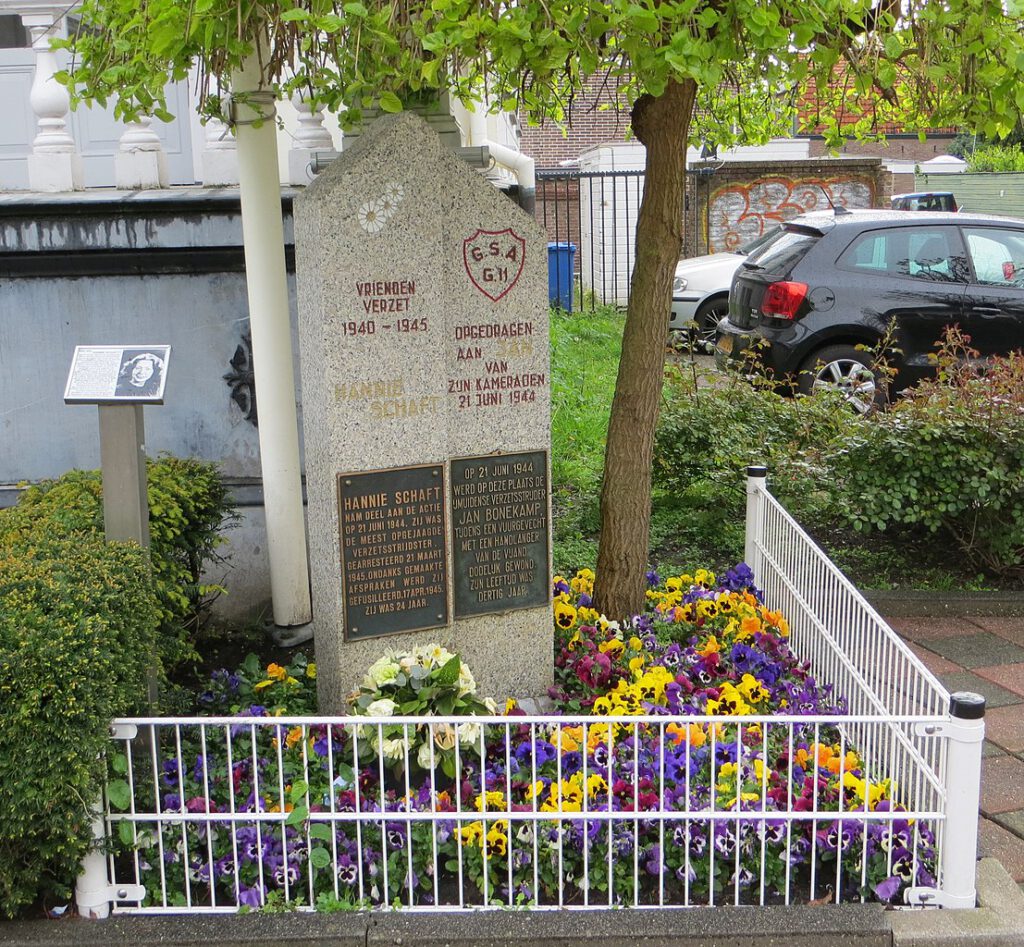
In letters that she wrote to friends and family at the time, the young woman expressed feelings of all-consuming desperation and sadness.
Her emotional turmoil might have contributed to the even greater risks Hannie took for the resistance in the months that followed.
But her dedication was short-lived. In 1945, Hannie Schaft was caught during a police control carrying two resistance-friendly newspapers and a pistol.
She was arrested, and when forced to wash her hair, the Nazis knew they had finally found the red-haired assassin they’d been searching for for over two years.
Execution
On 17 April 1945, Jannetje Johanna Schaft — alias Hannie Schaft — was brought to the beach of Overveen and executed with a shot to the head. She was buried right then and there between the dunes.
The Netherlands was liberated from Nazi occupation only 18 days later.
Legacy
After the war, Hannie’s remains were uncovered amongst the bodies of 421 members of the resistance — all of them men.
She was officially laid to rest in the Honorary Cemetery in Bloemendaal the same year.
Following her death, Hannie became known as one of the bravest resistance fighters of World War II, both in the Netherlands and abroad. US President Eisenhower decorated her with the Medal of Freedom.
READ MORE | Meet Mata Hari: the famous Dutch first World War spy
Meanwhile, in the German Democratic Republic, a post stamp adorned with her image celebrated her as an anti-fascist heroine.
Today, two books, one movie, and a short film have attempted to tell her story. A bronze statue titled ‘Woman in Resistance’, designed by her friend Truus Oversteegen pays tribute to her legacy in Kenaupark, Haarlem.
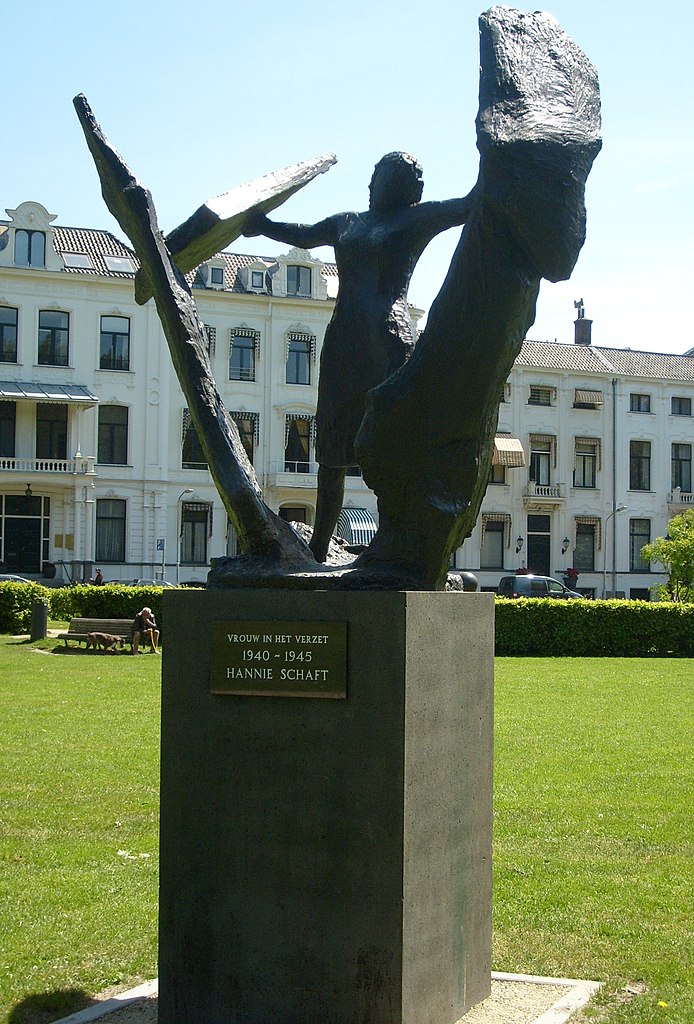
Hannie’s bravery and her unflinching sense of justice in the face of fascism, atrocity, and death make her one of the most important heroines of modern Dutch history.
She takes her rightful place next to incredible women in the resistance movement, such as Truus Wijsmuller and the sisters Oversteegen.
Nowadays, even Hannie is getting the AI treatment, as you can soon learn all about her story in a new feature film made using AI technology called “The Woman with Red Hair”. 🤯
We are proud to present the first 5 minutes of our debut feature at Staircase Studios AI: The Woman with Red Hair, a gripping portrayal of Johanna 'Hannie' Schaft, the courageous WWII Dutch Resistance heroine, brought to life with our cutting-edge AI technology.
— Staircase Studios AI (@Staircase_AI) March 4, 2025
Led by our CEO… pic.twitter.com/dgIaAiMDbS
What do you think of Hannie Schaft’s story? Tell us in the comments below!
Feature Image: Unknown Photographer/Wikimedia Commons/Public Domain (Modified)




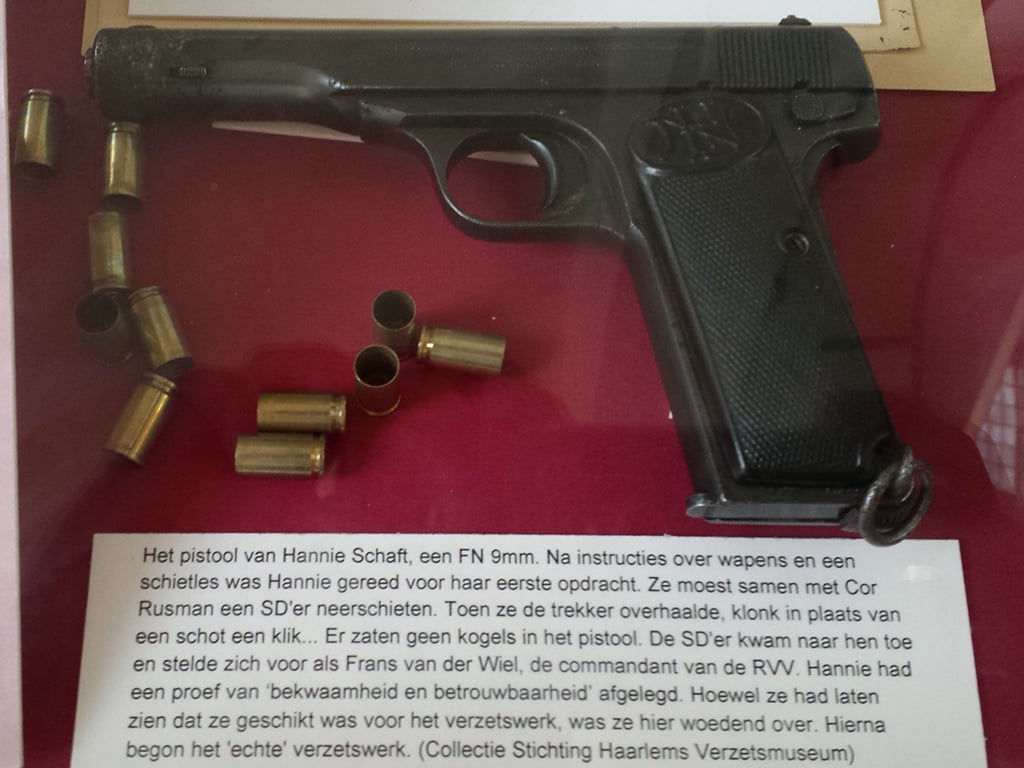

Thank you for the story on Hannie Schaft. For those interested, The National Hannie Schaft Foundation was established some 25 years ago by fellow Resistance fighter Truus Menger-Oversteegen. This foundation is very active, including stimulating young people to stand up for Freedom and inclusion. Every year the Hannie Schaft lecture is held by a prominent person as part of the annual National Hannie Schaft Commemoration. Also the book by Truus Menger-Oversteegen describing the war endeavors of Hannie Schaft and the sisters Freddie and Truus Oversteegen is available in English, titled: ‘Not Then, Not Now, Not Ever’. For more information on Hannie Schaft please visit the website of this non profit foundation: hannieschaft.nl
This article says she was executed on March 21, 1945, while other writtings indicate she died on April 17, 1945.
Hi Jackson,
Thank you for your comment. We have now updated the article accordingly.
Kind regards,
Heather from DutchReview.